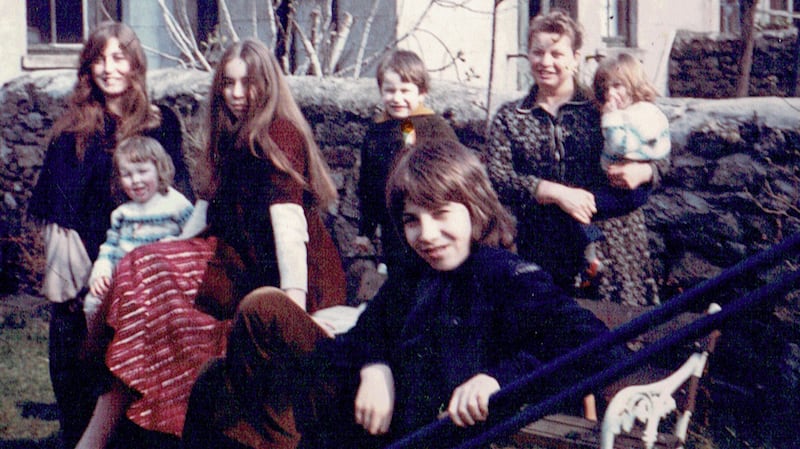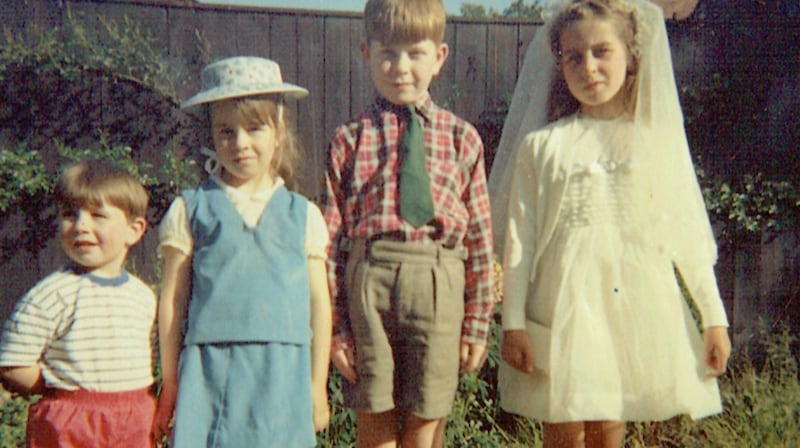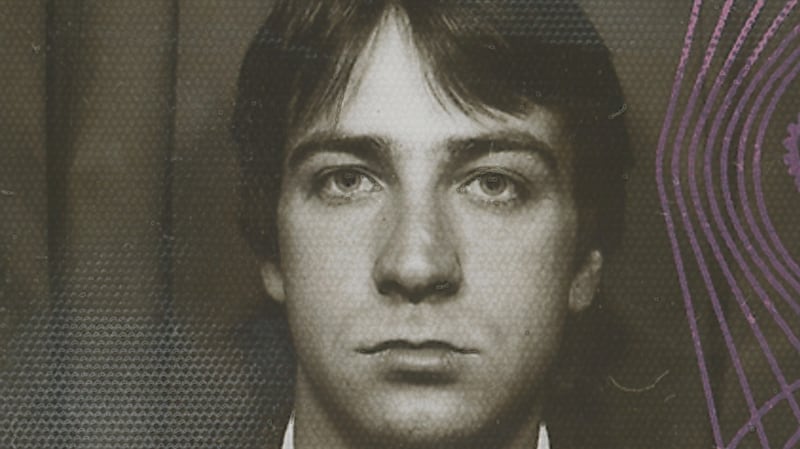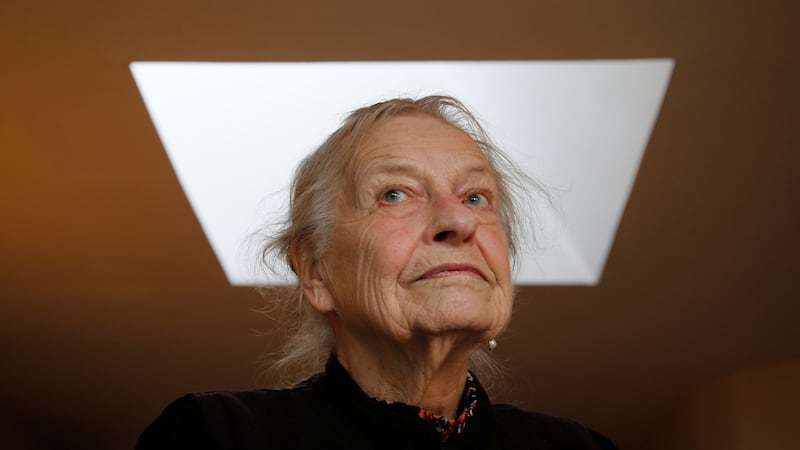When Dublin man Brian Griffin passed away in February, neighbours, friends and relatives gathered in Blackrock, Co Dublin. They were there to pay their respects to his mother Pat, and his surviving siblings Trish, Seán, Siobhán and Aisling.
Not present were Pat’s husband Mick, who died in 1975, or Brian’s eldest sister Bridget, who passed suddenly in 1994.
Brian’s brother Fergus was also unable to mourn his sibling’s death, though the reason for his absence was more complex. Having emigrated to New York in 1986, Fergus’s whereabouts were not known, and had not been, for almost 30 years.
For the first two years, Ferg – as he was known to friends and family – wrote letters home sporadically, detailing his time working as a painter, then a labourer, and as a clerk in a hardware store in Manhattan’s now ultra-hip neighbourhood of Chelsea.
Fergus documented his excitement at working in “rural” Long Island, where he’d see dragonflies, fireflies and squirrels, and how he missed his family. He wrote of how there were so many young Irish in New York, and how he’d occasionally enjoy a pint in Woodside in Queens, or on Bainbridge Avenue in The Bronx.
In a pre-internet era, when transatlantic phone calls were prohibitively expensive for young immigrants like him, Fergus acknowledged his failure to keep in frequent contact with home, despite receiving regular correspondence from his mother and siblings.
In July 1987, in a letter to his mother, he wrote: “The last time I was on the phone to you it was in the depths of winter, now it’s nearly tropical, so I suppose I’ve a few months to fill you in on, about what I’ve been doing.
“I’ve been getting experience using the power tools, and am physically stronger. I’ve been working with guys from all over. Ecuador, Guatemala, Trinidad, and Jamaica. I can even speak a little Spanish.”
His positivity was offset by occasional worries about his future: “[New York] is a really expensive place to live, so I haven’t been able to save anything. It’s pressure knowing you have to work every day of every week of the year.”
His letters were long and informative, but also scarce.
“If we didn’t hear from Fergus it was okay, because he was always infrequent with his communication,” Fergus’s younger sister Siobhán remembers.
“By 1989 though, we’d not heard from him in almost a year, and we were really worried. But we also knew he’d be angry if we reported this to the gardaí. We did not want to get him in trouble” – Fergus was undocumented – “and wreck any chance he had of a new life in New York.”
Their mother Pat reported Fergus missing to the gardaí in Blackrock but, because he was over 18, she was told there was little they could do.

"Mum got in contact with the Salvation Army, who'd had a good reputation for finding missing people at the time, but to no avail. We were also in contact with the NYPD, but again, the attitude was 'well, he is over 18'."
After making several more reports to the gardaí in Blackrock, Garda Jim Daly was appointed to the case. Pat supplied DNA samples, and the gardaí started working with the NYPD and Interpol to search for Fergus.
Registrar radiologist
Michael Fergus Olan Griffin was born in Wolverhampton in England in 1959. His parents had moved there the previous year, when his father, a doctor, was offered a position in that city as a registrar radiologist. The family had moved around a lot.
Eldest daughter Bridget was also born in the UK, while the oldest Griffin boy, Seán, began life in the US. Trish was born in Co Clare, brothers Fergus and Brian in Wolverhampton, before the family moved back to Dublin where the twins, Siobhán and Aisling, were born.
“There was trouble at home,” Pat Griffin says. “My husband was erratic and violent, due mainly to drink. The two eldest children left home early. Bridget studied in Trinity and got a good job in the London Library, and Seán also went his own way, leaving Trish and Fergus to bear the brunt of the [domestic] trouble over the next few years.”
According to his siblings, Fergus saw himself as his mother’s protector once Bridget and Seán had left home.

“Fergie seemed to always be the little [hero] who would try and defend Mum,” his sister Trish remembers. “He was a gentle soul, a brave boy, a mixed-up teen, a reluctant adventurer, who yearned for peace and tranquillity.”
Like many others in recession-hit Ireland of the 1980s, Fergus fell victim to Dublin's heroin epidemic. His attempts to "get clean" by relocating to London, where he stayed with his older sister Bridget in Tufnell Green, failed, and after being questioned by police there for drugs offences, he fled back to Ireland.
Before long, he was on a plane again, this time to New York. His mother Pat, having earlier sold part of the family home, bought his plane ticket. Thousands of young Irish were immigrating legally under the Donnelly visa programme at the time, but Fergus Griffin arrived in New York with no documentation, no contacts, little money and a drug problem.
Trish says her brother’s decision to flee to the US was “just another episode in the chaos” for the family.
“We were never a family to have meetings and roundtable discussions, so we all dealt with Ferg’s disappearance in our own way. As children we lurched from one crisis to another, being brought up in an effective war zone, our father being a violent alcoholic. I suppose we didn’t expect peace, quiet and order in life in general.”
Pat and her children missed Fergus. She particularly treasures a Mother’s Day card she received from him in March 1987, with a long letter inside.
“Towards the end of the summer of 1988 we got a phone call,” recalls Pat. “He was ringing from Grand Central Station. He had just got back from Philadelphia, where he’d been laying carpets in a hotel. He was uncertain what to do next.
“My son Seán and I were talking to him on the phone. I said to him; ‘For God’s sake Fergus let us know where you are and your address.’ We never heard from him again.”
Unsettling development
The anxiety intensified, and the worry escalated, when, in November 1993, the Griffin family were rocked by another unsettling development. Pat received a letter addressed to Fergus from the Passport Office in Dublin, asking him to collect his passport, which had been mailed there anonymously.
Members of the family went to the office to collect it, but were informed that it had since been mislaid.
For decades, the Griffin family searched. As years passed and technology advanced, they added internet searches to their routine. They kept in touch with the gardaí in Blackrock, with the NYPD and Interpol, but were still no closer to finding Fergus.
Information was uploaded to missing.ie, the website set up by Father Aquinas Duffy devoted to missing Irish people, when Siobhán saw an article about the site's launch in The Irish Times.
"Initially I thought I would be wasting my time, as I felt it was geared towards missing people in Ireland, as opposed to missing Irish people abroad," she says.

“I flew to New York in October 1994, and again in ’95. I was naive, because I didn’t know what organisations I could contact for help. I stuck flyers around Fergus’s last known address on West 17th Street, the address I’d kept sending Christmas presents to.
“I remember being impressed at New York’s milk cartons, as they were being used to report missing children, and I was trying to find out how this could be done for adults. I also accessed pages and pages of Fergus Griffin telephone listings from the [American] ‘white book’ when it went online, and I rang them all to no avail.”
In mid 2017, while researching another article, this journalist discovered that a 30-year-old man named Fergus Griffin had been buried in Plot 203, Section 1, at a “Potter’s Field” cemetery on New York’s Hart Island, on December 8th, 1989.
A Potter’s Field is a cemetery for the unidentified and unclaimed, those without next-of-kin or the means to pay for a “proper” funeral, and infants who may have been stillborn, or who had passed away shortly after birth. The cemetery on Hart Island, which contains over one million burials, is one of the largest of its kind in the world.
This Fergus Griffin, according to the Hart Island Project (hartisland.net, a non-profit organisation set up by New York artist Melinda Hunt in 1994 to assist loved ones to visit and access burial records), died on November 21st, 1989, around the time the Griffin family in Dublin had become increasingly concerned about their son and brother’s whereabouts.
Why there was no connection made until now between the missing man in Dublin and the body found in New York, has not been determined. It was a different era of course, a “pre-information age, where records were not as readily available or as easy to search, especially for the public.
Mass graves
Hart Island is a tiny land mass located east of the Bronx in Long Island Sound, a tidal estuary of the Atlantic Ocean. Over time, it has served as the site for a Civil War-era prison, a psychiatric institution, a boys’ reformatory, and a tuberculosis sanitarium.
Since 1868, it has been used primarily as a cemetery. There are no personal headstones on Hart Island, just markers separating the mass graves, each holding as many as 150 adults, or hundreds more infants. Public visits to the cemetery are conducted monthly, and have to be signed up for in advance.
Visitors, under the watchful eye of armed guards, may view the cemetery from a small gazebo on the island, which is near what was the old “visit-house”. No phones, cameras or electronic equipment are allowed on the island, which is reached via a short ferry trip from City Island in The Bronx.

Flowers without vases, small stuffed animals, photographs, prayer cards, small flags, and blankets may be left for the graves, but no heavier items are allowed.
The Hart Island Project has been lobbying for management to be transferred from the Department of Corrections (graves are dug by inmates from the nearby Rikers Island jail), to the Department of Parks and Recreations, so a public park may be built to make it more convenient for mourners to visit.
The project maintains a meticulous online database of the people buried there since 1980. To date, 68,177 (and counting) burials have been registered online at hartisland.net. Thousands have Irish surnames.
The website’s “Travelling Cloud Museum”, added in 2014, lists the dead and maps their exact burial plots, offering friends and family members the opportunity to post stories, photographs and music to celebrate the memory of the person they have lost. Each profile has a “ticking clock”, counting the length of time from when the person was buried, to when they are acknowledged online by a loved one.
Fergus Griffin was one in a long line of individuals with Irish-sounding names in the database, who spent their last days on the Bowery and ended up buried on Hart Island.
Among the many of these who died in the 1980s or 1990s were the names Walsh, Sullivan, O’Neill, O’Rourke, O’Connell, Nolan, Burke, Donnellan, Collins and Murphy
Police file
According to police records, the Fergus Griffin buried on Hart Island was found on November 21st, 1989, deceased, with a hypodermic syringe in his hand, in room 406 of the FuShin Hotel, at 101 Bowery in downtown Manhattan.
The FuShin Hotel, long-since closed, was one of many such hostels offering cheap lodgings in New York’s Bowery district. Most were run-down tenement buildings, offering men a last place to stay before they wound up on the street.
The police file on Fergus Griffin's discovery reported that the first officer on the scene was most likely Officer Kenneth Kumpel. a Long Island native who served several years as a New York City cop, before joining the Fire Department where he served until his death in the terrorist attacks of September 11th, 2001.

After receiving that 28-year-old police report from the NYPD’s Legal Bureau in downtown Manhattan, contact was made by this journalist with Father Aquinas Duffy, and then Garda Jim Daly of Blackrock gardaí, who had been a constant support to the Griffin family over the years. The family were informed and continually updated.
Contact was made between the Griffin family and the New York Medical Examiner. There were no dental records for Fergus available to compare with the man buried on Hart Island, so the body was exhumed, and DNA compared with that Pat Griffin had supplied years earlier.
After one inconclusive result, a second test confirmed the profiles matched. It was Dublin man Fergus Griffin, son of Pat and brother of Siobhán, Trish, Seán, and Aisling, who had lay buried on Hart Island for almost 30 years.
“We were numb with grief,” Trish recalls, of the moment they heard the news. “All the pent-up worries and wondering boiling down to a lonely death, a miserable grave. A life usurped by childhood terrors and the beguiling siren call of drug-induced oblivion.”
Pat says: “I knew he must be dead, but at the same time you think, ‘well maybe I’m wrong, perhaps he has amnesia, perhaps he is in prison’. Finding out was a relief in one way, at least we know for certain, but it is so sad for all of us. He dying, unknown, unloved, unmourned, and in a pauper’s grave.”
There’s no way of knowing how many of the hundreds of Irish names listed as having been buried on that lonely strip of land at the edge of the Atlantic, alongside Fergus Griffin, endured similar journeys.
Missing child
The priority for the family now is to bring Fergus home. They are waiting for documents to be released from the medical examiner’s office, but Siobhán plans to travel to New York in January, to organise his cremation and arrange a flight back to Dublin.
“It’s all so very, very sad. This has been such a weird experience, as it’s been going on for so long. It’s like a consistent, dull pain of emptiness going on in the back of your head.
“I’m glad my 87-year-old Mum will know where he is. I’ve had nearly 30 years of her exclaiming and wringing her hands every day, ‘Where’s Fergus? I bet he is at the bottom of the Hudson River.’
“I read about parents dying before they find out what’s happened to their missing child, and I really feel for them. It’s just awful.

“For us as a family, it’s a relief to know we will be bringing him home, but I am distraught that it’s taken nearly 30 years, and it’ll be his cremated remains. There is no happy ending here.”
Fergus Griffin is no longer missing. His Hart Island clock stopped ticking after 28 years, 241 days, 38 minutes and 15 seconds, when family members posted loving tributes to him on hartisland.net, following his positive identification via DNA testing.
A mother’s son is coming home.











